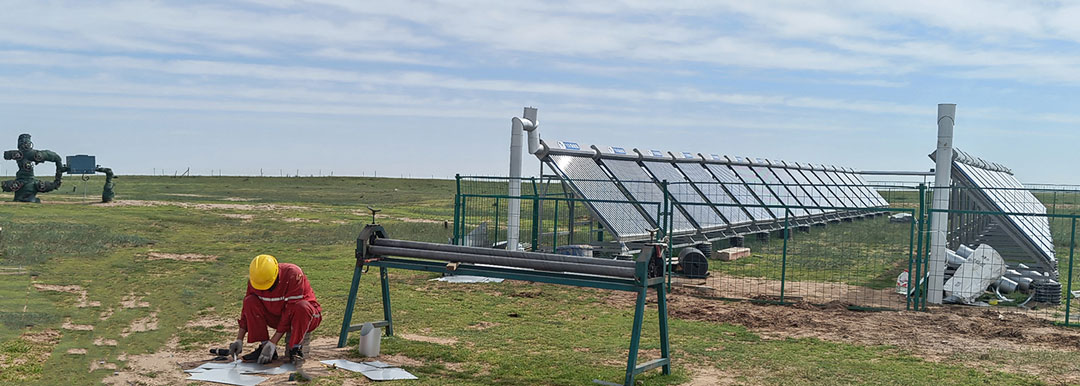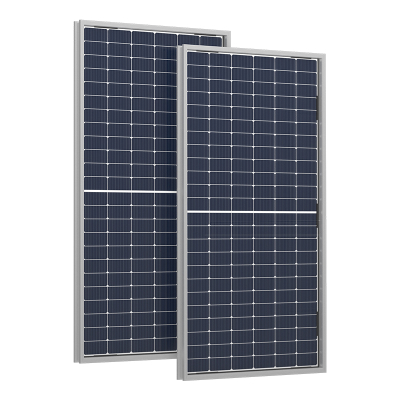Solar Oil Heating Project in Inner Mongolia: Opening a New Chapter in Energy Utilization
Against the backdrop of China’s active promotion of the "dual carbon" goals (carbon peaking by 2030 and carbon neutrality by 2060) and strong advocacy for energy conservation, emission reduction, and sustainable development, a significant solar oil heating project was officially launched in the vast land of Inner Mongolia in 2022. The implementation of this project, like a bright new star, has brought fresh vitality and transformation to the field of energy utilization.
Inner Mongolia is rich in oil resources, with numerous oil production sites scattered across its territory. However, for a long time, oil heating has relied on traditional electric energy or fossil fuels, resulting in high energy consumption and substantial costs. According to incomplete statistics, in the past, a single oil well consumed hundreds of thousands of kilowatt-hours of electricity annually for heating. This not only imposed a heavy economic burden on enterprises but also exerted considerable pressure on the local power supply. Meanwhile, the use of traditional energy sources was accompanied by significant greenhouse gas emissions, causing noticeable damage to the ecological environment.
The scale of this solar oil heating project is impressive. Professional calculations show that after the project is put into operation, each oil well can save 260,000 kWh of electricity per year. This figure means that if the project is promoted to numerous oil wells, the annual electricity savings will be astronomical, greatly alleviating the local power shortage. More surprisingly, from an economic cost perspective, the project can recover all its investment in just two years. This efficient investment payback period allows enterprises to practice environmental protection concepts without worrying about long-term economic pressure, laying a solid foundation for the continuous advancement and wide application of the project.
From a technical perspective, the project adopts advanced solar heat collection technology and high-efficiency heat storage devices. The vast grasslands of Inner Mongolia have abundant solar resources, providing unique conditions for solar energy collection. Large solar collectors are neatly arranged, like a silver sea. They efficiently capture every ray of sunlight and convert it into thermal energy. This thermal energy is quickly transferred to specialized heat storage devices, which use new insulation materials and scientific structural designs to minimize heat loss. This ensures a stable and continuous supply of heat required for oil heating when needed. In case of cloudy days or insufficient sunlight, the project is also equipped with intelligent auxiliary heating systems. These systems can start automatically based on actual conditions to ensure that oil heating is not affected and oil production operates stably.
Under the guidance of China’s dual carbon goals, the significance of this project is self-evident. As a clean and renewable energy source, the large-scale application of solar energy has effectively replaced traditional high-energy-consumption and high-pollution energy sources. This not only significantly reduces the operating costs of oil production but also makes outstanding contributions to protecting the local natural environment. According to calculations by relevant institutions, after the project is fully promoted, it can reduce a large amount of carbon dioxide emissions annually, equivalent to planting tens of thousands of trees. This plays a positive role in improving air quality and maintaining ecological balance. Furthermore, the successful implementation of this project provides valuable experience and a reference model for energy transformation in other regions, helping to accelerate the realization of China’s carbon peaking and carbon neutrality goals.
There are also successful cases of similar solar oil heating projects in other parts of China. For example, the solar thermal utilization project implemented in some areas of Xinjiang Oilfield has achieved excellent results by combining solar thermal technology with oil and gas production—saving tens of thousands of cubic meters of natural gas and reducing carbon dioxide emissions by dozens of tons annually. This project not only solved the energy problem in local oil and gas production but also eliminated safety hazards caused by the use of gas-fired heaters. Another example is the solar thermal utilization demonstration project in Liaohe Oilfield, which selected low-cost energy storage and heat exchange materials with high heat storage capacity per unit volume. This achieved a key breakthrough from solar power generation to heat storage, effectively promoting the development of new energy business in the oilfield.
Drawing on these successful experiences, the solar oil heating project in Inner Mongolia has made technological innovations and optimizations based on its own geographical and resource advantages. With the continuous advancement of the project, it is expected to further expand its scale in the future, extending the application of solar energy to more oil production links and achieving comprehensive energy replacement and upgrading. At the same time, it can be organically integrated with other new energy projects, such as wind power generation, to build a more complete and efficient energy utilization system. This will inject new vitality into the development of the energy industry in Inner Mongolia and make greater contributions to national energy security and ecological environment protection. Guided by China’s dual carbon strategy, this project is leading a new trend in energy utilization with its unique advantages and innovative model, becoming a bright beacon on the path of sustainable development.





